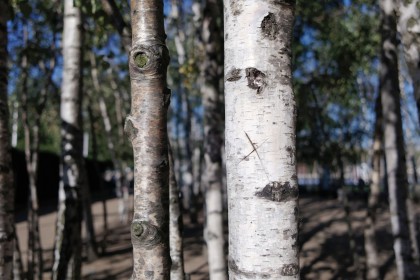Why you can trust TechRadar
DXO has used a good quality sensor and it knows how to get good results from a lens, so I wasn't surprised to discover that the One is capable of capturing a good level of detail. As usual, the raw files (either standard raw or Super raw) look better at 100% than the JPEGS but the differences were more marked in the lab than with most real world images.
Interestingly, the camera gave us a lot of problems in the lab with DXO's own Analyser software struggling to give us signal to noise and dynamic range measurements for the higher sensitivity settings. We shot and ran the analysis numerous times, but each time it failed to produce results for the upper values.

The One has captured a high level of detail and exposure and colour are first rate with this bright scene. Click here for a full size version.

JPEG image. Click here for a full size version.

Raw image. Click here for a full size version. Both of these images look good but at 100% there's just a little more detail in the front trunk in the image form the raw file.
In real world images, noise is controlled well at normal viewing and sharing sizes. If you zoom into view high sensitivity images at 100% you'll see some smoothing between slightly bold edges, but it's not excessive (or uncommon).
At low to mid sensitivity values there is no noticeable benefit to shooting Super raw images, but as sensitivity reaches ISO 1600 signal to noise ratio is boosted and images are cleaner. The impact upon detail resolution is less clear – sometimes it seems slightly better, other times a little worse. We didn't see a measurable improvement in dynamic range over standard raw files either.
Sign up for breaking news, reviews, opinion, top tech deals, and more.

JPEG image: Click here for a full size version.

Super Raw image. Click here for a full size version. Sensitivity was pushed to ISO2000 here and the Super Raw file looks more natural, detailed and sharper at 100%. At normal viewing sizes the differences are subtle but visible.
Shooting images with backlit subjects such as leaves against a bright sky reveals that chromatic aberration is controlled well, as is distortion. Colours are also good and the automatic white balance system generally does a good job. The general purpose metering system is a little less consistent, with minor shifts in focus point or framing sometimes causing quite dramatic changes in exposure, which can leave you occasionally adjusting the exposure compensation value backwards and forwards.
On the whole, though, the DXO One produces very good images which are better than you'd expect to get from an iPhone. They also compare well with a decent dedicated compact camera like the Sony RX100 III.

Shooting this close subject at f/1.8 has restricted depth of field (the size of the sharp zone) dramatically. I had to dial in 0.67EV negative exposure compensation to get the result I was looking for. Click here for a full size version.

DXO is promising to add an electronic level with a firmware update at some point in the future. It would be useful with subjects like this. Distortion is controlled well though. Click here for a full size version.
There were periods during this test where the camera and app performed well, but there were also some frustrating occasions when the app crashed or it wouldn't show the image across the whole phone screen. With the present incarnation of the app and firmware, it lacks the reliability of a Sony compact camera.
The illumination screen that pops-up at the point of taking a selfie helps the camera produce more flattering results in low light, but there's a delay after the countdown, which rather defeats the point of the countdown.
